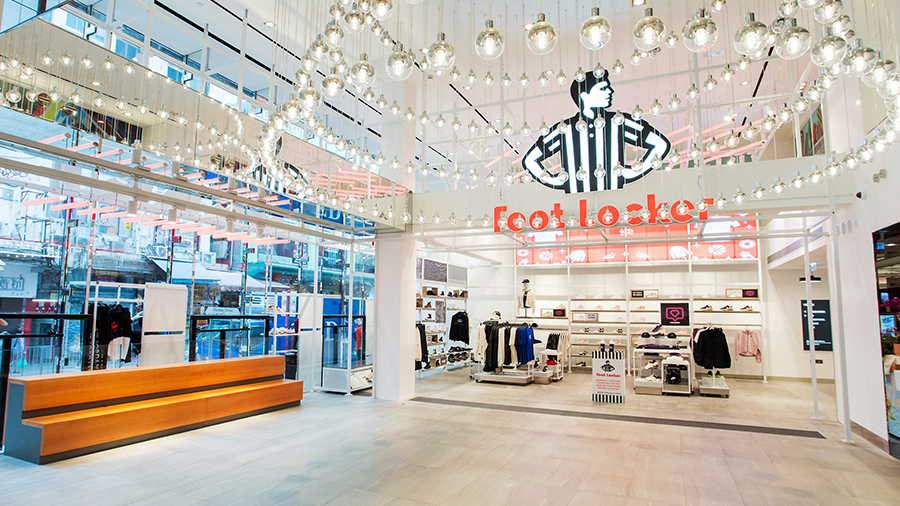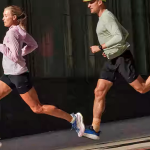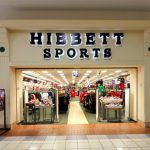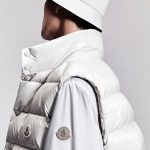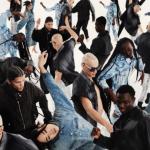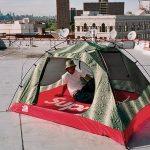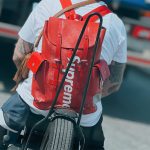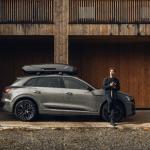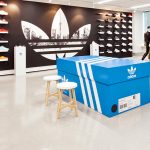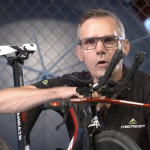Foot Locker Inc. reported third-quarter results that surpassed expectations due to improved allocation of Nike products on top of continued success in its diversification efforts to feature other footwear brands. The sneaker giant lifted its guidance for the year.
Shares of Foot Locker were up about 8 percent in mid-day trading on Friday.
On her first quarterly conference call with analysts, Mary Dillon, who took over as president and CEO on September 1, said that strength during the back-to-school period, strong demand signals within basketball, sneaker culture and the kids business were identified and Foot Locker was able “to partner with Nike to serve more customers in those categories, a trend we expect to continue into the fourth quarter.”
As a result, Foot Locker now expects to end the year with a higher mix of Nike sales than originally anticipated.
In late February, Foot Locker announced that Nike’s portion of Foot Locker’s sales would decline to about 55 percent by the fourth quarter of 2022, down from approximately 65 percent in the 2021 fourth quarter and 75 percent overall for 2020. Foot Locker will also receive less “high heat” or marquee products, such as retro Jordans.
The reallocation is part of Nike’s efforts to emphasize direct-to-consumer sales and consolidate wholesale accounts.
Dillon, who was formerly executive chair and CEO of Ulta Beauty, said Nike’s portion of the mix was still down in the third quarter and is expected to be down in the fourth quarter. She also said Nike’s share of the mix will still decline to about 55 percent but the shift will be “more gradual” than initially estimated. She added, “Our relationship with Nike is very important. It’s strong.”
At the same time, Dillon stressed that the better-than-expected performance reflects a quicker-than-expected benefit of its accelerated shift to emphasize non-Nike brands.
Overall comps in the third quarter increased 0.8 percent against record sales levels last year. Sales of non-Nike products at core banners were up in the mid-single-digits with most of the company’s top-20 vendors posting strong growth.
Adidas brand sales grew in the mid-single-digits in the quarter. In May, Foot Locker formed a partnership with Adidas that includes product collaboration and improved access to products. Enhanced presentation of Adidas will reach approximately 300 doors globally by the end of the fiscal year.
Puma’s sales were up high-single-digits at Foot Locker in the quarter. Earlier this week, Foot Locker formed a similar partnership with Puma with an emphasis on basketball, including the LaMelo Ball range; reaching younger consumers; as well as more exclusives and marketing collaborations.
Among other brands, sales were up nearly 70 percent at New Balance in the quarter, grew over 25 percent at Crocs and Converse, and expanded nearly 50 percent at Ugg.
Dillon, who took over for the retiring Dick Johnson, said she remains committed to Foot Locker’s brand diversification efforts, noting that similar to other high-engagement categories like beauty, consumers are seeking out choice and variety in footwear.
“As a category grows and customers realize they can build a sneaker wardrobe, their appetite for variety and desire for choice is growing and we know that 80 percent of our best customers already buy three or more brands,” said Dillon. “We are under-penetrated in virtually all of our brands outside of our top vendor. We continue to see opportunities to bring the customer a broader and richer set of product offerings across brands and categories. And we believe our third quarter results are further evidence that our efforts to broaden our portfolio are driving growth across multiple brands and helping us expand our customer base.”
Total sales in the quarter slipped 0.7 percent, to $2.17 billion, ahead of Wall Street’s consensus target of $2.1 billion. Excluding the effect of foreign exchange rate fluctuations, sales increased 3.3 percent.
Net income came to $96 million, or $1.01 per share, compared with $158 million, or $1.52, in the year-ago quarter. On a non-GAAP basis, adjusted earnings declined 27.0 percent to $1.27 per share from $1.74, but topped Wall Street’s consensus target of $1.14.
Gross margin declined 270 basis points to 32.0 percent of sales. Merchandise margins fell 280 basis points, driven by higher markdowns as a promotional environment remain elevated.
At quarter-end, inventories were up 29.5 percent from the end of Q3 last year, but down from the 52 percent year-over-year increase at the end of the second quarter.
SG&A increased 60 basis points to 21.5 percent of sales, driven mainly by labor inflation and partially offset by approximately $9 million of savings from its recently-launched cost optimization program that’s aiming to reduce annual overhead by $200 million.
By month, sales were up mid-single-digits in August, up low-single-digits in September and down mid-single-digits in October against its toughest monthly comparison of the quarter.
Company CFO Andrew Page said Foot Locker had seen a strong start to the back-to-school season but had been cautious about sales growth for the quarter due to “much softer-than-expected” sales in June and early July. Page said, “Given solid demand, improved access to inventory and the execution of our teams, we were able to sustain much of that momentum throughout the quarter.”
By category, footwear comped up low-single-digits in the quarter while apparel and accessories fell in the mid-single-digits. In apparel, owned brands were up over 50 percent with strong fleece and outerwear performance through its CSG and LCKR brands.
Comparable store sales increased 4.7 percent in the quarter. Digital channel comps were down 14.5 percent with overall penetration at 16.3 percent, down from 19.8 percent last year but above 15.3 percent reached in 2019.
By region, overall comps in North America were down 1.1 percent, according to Frank Bracken, EVP and COO. Foot Locker stores were up high-single-digits on strong basketball trends and gains in all major back-to-school markets. Kids Foot Locker increased in mid-single-digits, driven by broad-based strength across brands. Champs Sports was down low-double-digits, though still up compared to 2019 as inventory was funneled to support the Foot Locker and Kids Foot Locker banners.
WSS, its off-mall value banner focused on Hispanic communities, contributed $162 million in sales for the quarter with comps up low-single-digits, improving from a low-single-digit decline in the second quarter. Said Bracken, “While WSS consumer continues to be pressured and traffic remains impacted, our execution in store helped drive conversion improvement.”
New WSS stores opened so far in 2022 are performing in line with plans and its first store in the southeast region will open in Florida later this quarter. Said Bracken, “With its special connection to that community and only 108 stores today, WSS has an incredible runway for growth in both its core markets in the west and southwest as well as new regions where the Hispanic population is forecasted to grow the fastest.”
Overseas, comps in Europe inched up 0.8 percent with ongoing strength in key markets led by France, Italy and Spain. BOPIS was rolled out in Europe, reaching approximately 400 stores across the region. Asia Pacific comps increased 36.5 percent, driven by the ongoing loosening of travel restrictions in some Asian markets, lapping some year-ago store closures due to the pandemic, and improving inventory receipts. Japan-based Atmos continued its healthy momentum, contributing $40 million in sales, up double digits.
Bracken said Foot Locker’s larger Community and Power Store off-mall banners continued to deliver sales above their plan and out-comping the overall fleet by several 100 basis points. Twenty new Community and Power Stores opened in the quarter, giving the company approximately 150 doors in these formats and on pace to reach a goal of 300 globally by 2024. Including WSS, approximately 25 percent of Foot Locker’s store count will be off-mall by the end of the fiscal year with additional off-mall expansion planned in the future.
As far as growth opportunities she’s seen beyond continuing efforts to diversify its product mix, Dillon cited e-commerce with penetration of 16 percent “below where it should and can be.” She said, “Our current omni-channel customers in the U.S. spend nearly four times the amount of our single channel shoppers, yet they represent only 6 percent of our customer base.” In an interview on CNBC early on Friday, Ms. Dillon highlighted the growth opportunities in the e-commerce business, but was noncommittal on a target level above the current penetration except to say it would be higher.
She also sees room to improve the value proposition and drive more engagement with the FLX loyalty program.
Foot Locker is also looking “for ways to simplify the business to make sure we’re focused on the areas that have the most strategic value and will generate the most return.” As part of that effort, Foot Locker paused its planned entry into Japan this year and decided to wind down two European joint ventures in the Benelux region and Eastern Europe.
In technology, needs are being re-accessed to support its omni-channel and marketing capabilities and some related leadership changes and new hires are planned. She said, “Having a stronger backbone in technology enablers will be a key priority for us going forward.”
Looking to the holiday quarter, Dillon said Foot Locker is expecting to build on its recent momentum with a “strong launch lineup” that includes releases of Jordan retros; follow-up launches of the MB.02, LaMelo Ball’s second signature sneaker with Puma; a Crocs collaboration with artist Ron English as part of the Party Animals; and a Puma Paw Patrol kids’ collaboration.
Ugg will be a key focus for holiday selling and New Balance is expected to continue to be a bigger seller for Foot Locker. Champs Sports will become the first U.S. brick & mortar retailer to stock the U.K.-based activewear brand Gymshark. The On and Hoka footwear brands are also continuing to be rolled out.
In marketing, Foot Locker’s “first-ever truly” integrated marketing campaign, Foot Locker Holiday House Party, is being launched featuring store associates, musicians and online personalities “to position Foot Locker as your sneaker home for the holiday,” said Dillon.
Updated guidance for the full-year calls for:
- Total sales, down 4 percent to 5 percent (prior, down 6 percent to 7 percent);
- Comp sales, down 4 percent to 5 percent (prior, down 8 percent to 9 percent);
- Gross margin, 31.7 percent to 31.8 percent (prior, 31.1 percent to 31.2 percent);
- SG&A rate, approximately 22.0 percent (prior, 21.3 percent to 21.4 percent); and
- Non-GAAP EPS, $4.42-$4.50 (prior, $4.25-$4.45);
Guidance for the fourth quarter calls for:
- Total sales, down 8 percent to 10 percent, partly reflecting ongoing foreign currency pressure;
- Comp sales, down 6 percent to 8 percent;
- Gross margin, 29.0 percent to 29.3 percent against 33.0 percent;
- SG&A rate, 23.3 percent to 23.4 percent against 22.4 percent, reflecting labor inflation, partially offset by cost optimization; and
- Non-GAAP EPS, 45 cents to 53 cents against $1.67.
Photo courtesy Foot Locker

